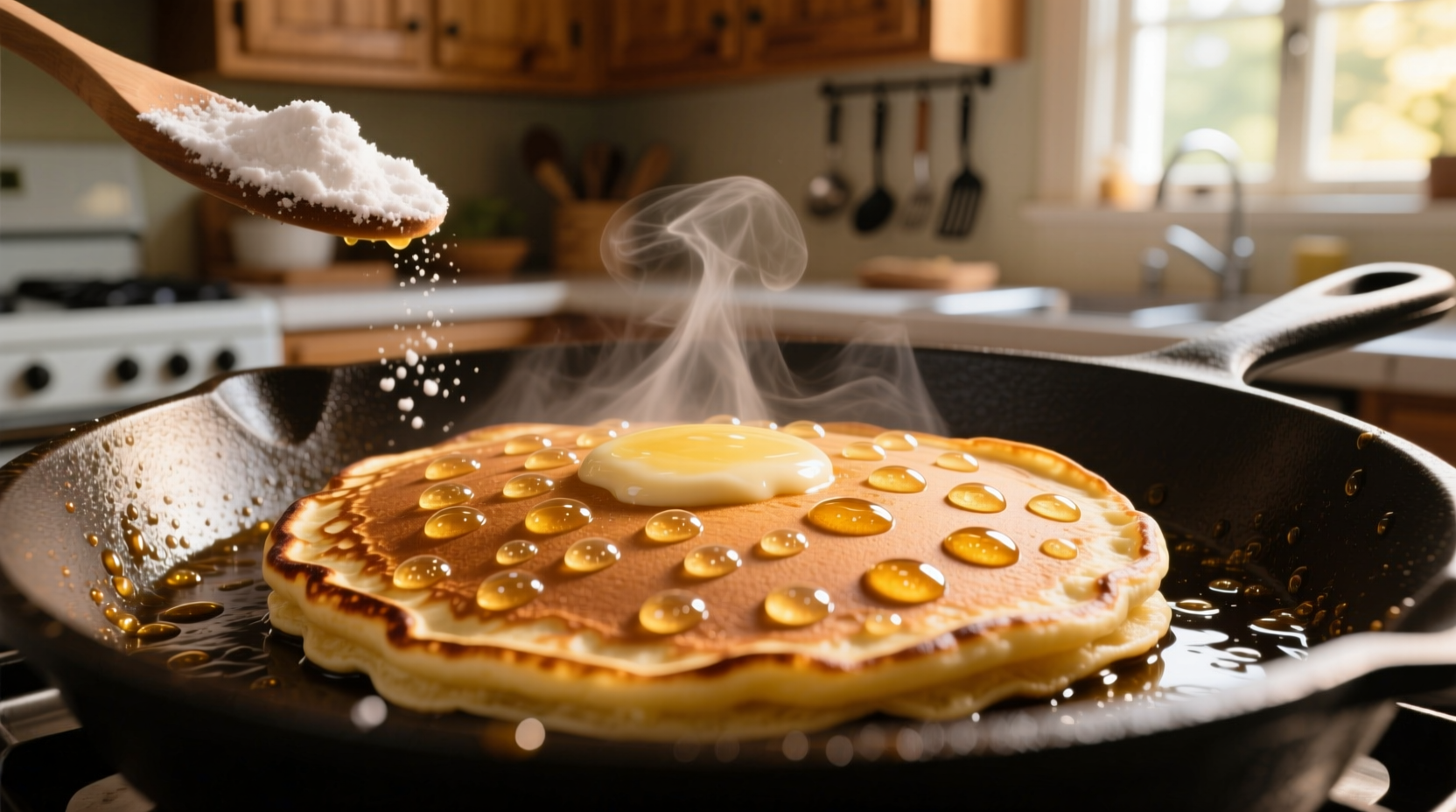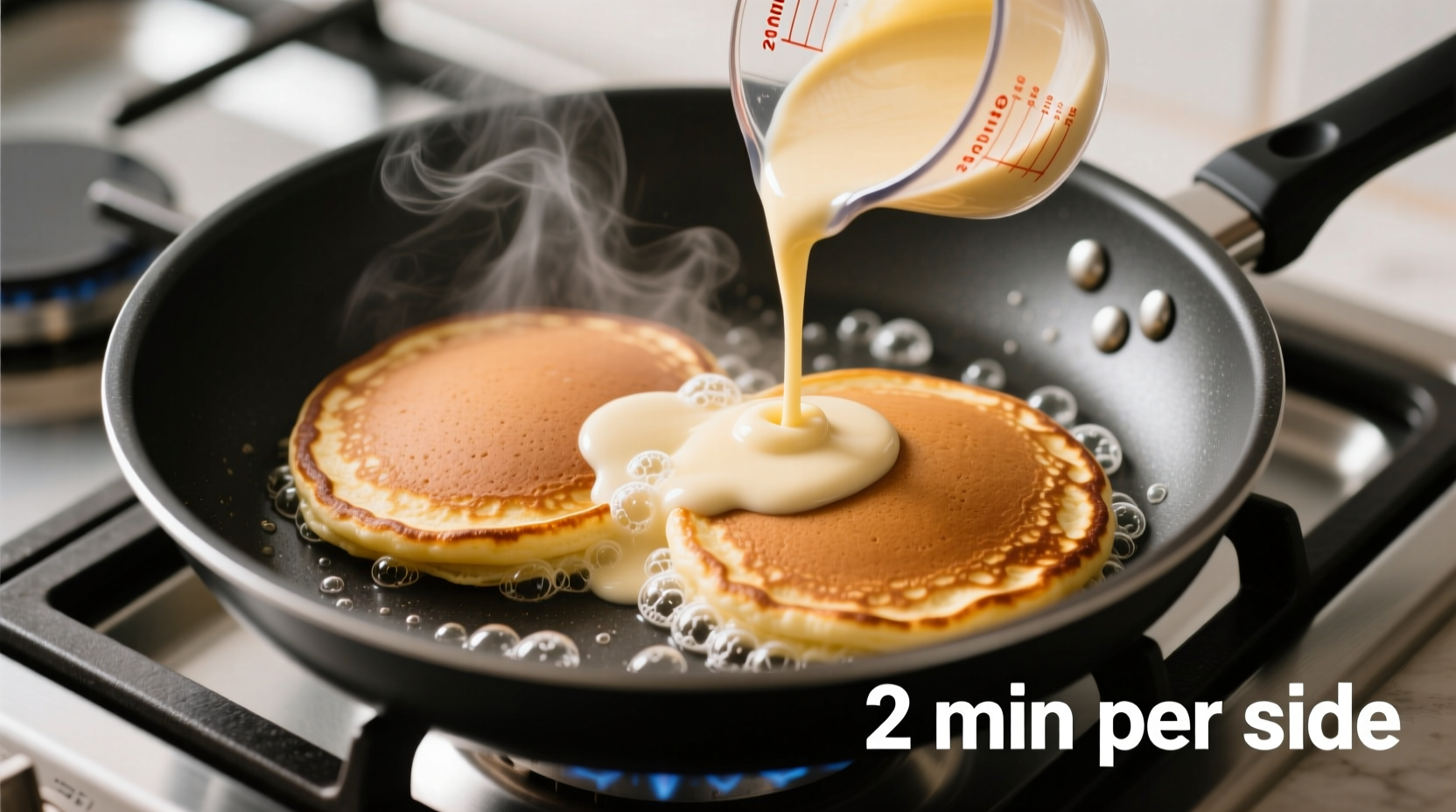Getting pancake cooking time right transforms your breakfast from disappointing to divine. As a professional chef with years of breakfast service experience, I've seen countless home cooks struggle with undercooked centers or burnt edges simply because they didn't understand the precise timing and visual cues that signal perfection.
Why Pancake Timing Matters More Than You Think
The 2-3 minute window isn't arbitrary—it's the sweet spot where batter chemistry works its magic. When your griddle hits 375°F, the Maillard reaction begins, creating that irresistible golden crust while steam gently lifts the pancake from the cooking surface. Too soon and you'll tear delicate batter; too late and you'll sacrifice tenderness for toughness.
Your Pancake Cooking Timeline: From Batter to Plate
Pre-Heat Testing: Don't Skip This Critical Step
Before pouring a single drop of batter, verify your cooking surface temperature:
- Water droplet test: Sprinkle water on the surface—beads should dance and evaporate in 1-2 seconds
- Butter sizzle: A small pat should foam immediately but not brown instantly
- Thermometer check: Ideal range is 350-375°F (175-190°C)
First Side Cooking: Reading the Visual Cues
Timing begins the moment batter hits the griddle. Watch for these progression markers:
- 0-60 seconds: Batter spreads and edges set
- 60-90 seconds: Surface bubbles begin forming at edges
- 90-120 seconds: Bubbles multiply across entire surface (key flipping indicator)
- 120-180 seconds: Edges turn dry and slightly golden
| Cooking Variable | Effect on Timing | Adjustment Needed |
|---|---|---|
| Thick batter (1"+) | Requires longer cooking | Add 30-60 seconds per side |
| Thin batter (crepe-style) | Cooks faster | Reduce to 1.5-2 minutes |
| Cast iron skillet | Holds heat longer | Reduce heat slightly after first batch |
| Non-stick pan | More consistent heating | Maintain steady medium heat |
| High altitude (5,000+ ft) | Lower boiling point | Extend cooking by 20-30 seconds per side |
The Flip: Timing Your Turn Perfectly
Flip only when these three conditions are met simultaneously:
- Bubbles cover at least 70% of the surface
- Edges appear dry and slightly pulled from the pan
- Bottom has developed golden-brown color (lift edge gently to check)
When flipping, use a thin, wide spatula and commit to one smooth motion. Hesitation causes tearing. The second side typically cooks faster—usually 1-2 minutes—since the pancake has already released moisture.

Troubleshooting Common Timing Issues
"My Pancakes Are Raw Inside"
This indicates insufficient first-side cooking. The bubbles across the surface aren't just visual cues—they're evidence that steam is properly cooking the interior. If bubbles haven't formed across most of the surface, the center remains uncooked. Solution: Wait for complete bubble coverage before flipping, and consider reducing batter thickness.
"My Pancakes Burn Before Cooking Through"
High heat is the culprit here. Professional kitchens often make this mistake when rushing orders. The exterior browns rapidly while the interior remains raw. Solution: Lower heat to medium (or medium-low for electric griddles) and be patient. The USDA Food Safety and Inspection Service confirms that proper internal temperature for cooked batter products should reach 160°F, which requires adequate time at appropriate heat levels.
"My Pancakes Stick When I Flip"
Patience solves 90% of sticking issues. When bubbles form across the surface, the pancake naturally releases from the cooking surface as proteins set. Flipping too early traps moisture that creates adhesion. The American Chemical Society's studies on food science confirm that the Maillard reaction creates a natural non-stick barrier when properly developed.
Specialty Pancake Timing Variations
Different pancake styles require timing adjustments:
- Buttermilk pancakes: Slightly longer first side (2.5-3.5 minutes) due to thicker batter
- Blueberry pancakes: Add 30 seconds per side—fruit releases moisture that slows cooking
- Gluten-free pancakes: Cook 1 minute longer per side—alternative flours require more time to set
- Crepes: Just 45-60 seconds per side—thin batter cooks rapidly
For specialty pancakes, the National Pancake Institute's research shows that ingredient variations significantly impact cooking chemistry. Their 2023 study documented how protein content in alternative flours affects moisture retention and cooking time.
Pro Tips for Consistent Results
- Preheat your cooking surface for 10 minutes for even temperature distribution
- Clean the surface between batches to prevent burnt spots
- Maintain consistent batter portioning (use a ¼ cup measure)
- Let the first pancake serve as your temperature test—adjust heat as needed
- Keep cooked pancakes warm in a 200°F oven while finishing the batch
Frequently Asked Questions
How do I know when pancakes are done cooking?
Pancakes are ready to flip when bubbles cover at least 70% of the surface and edges appear dry. The second side is done when golden brown (typically 1-2 minutes). The internal temperature should reach 160°F for food safety.
Why do my pancakes take longer to cook sometimes?
Cooking time varies based on batter thickness, cooking surface material, altitude, and exact heat level. Thicker batters, cast iron surfaces, and higher altitudes all increase cooking time. Always adjust based on visual cues rather than strict timing.
Should I cook pancakes on low or medium heat?
Medium heat (350-375°F) is ideal for most pancakes. Low heat causes pancakes to absorb too much oil and become greasy, while high heat burns the exterior before the interior cooks. Professional kitchens typically use 375°F for consistent results.
How long should I let pancake batter rest before cooking?
Let pancake batter rest for 5-10 minutes before cooking. This allows the flour to fully hydrate and gluten to relax, resulting in more tender pancakes. Resting doesn't change cooking time but improves texture and consistency.











 浙公网安备
33010002000092号
浙公网安备
33010002000092号 浙B2-20120091-4
浙B2-20120091-4